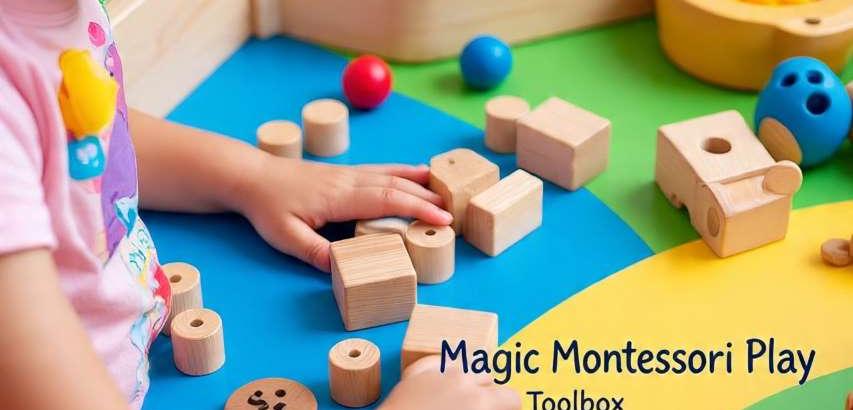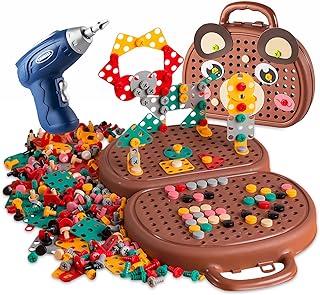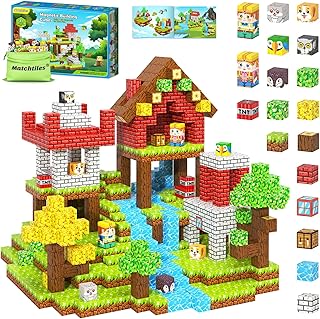
The term "Magic Montessori Play Toolbox" evokes more than just a box of toys; it represents a carefully curated collection of materials and a guiding philosophy designed to foster a child's natural development. It’s not magic in the sense of illusion, but in the transformative power it has on a child's independence, concentration, and love for learning.
This "toolbox" is less about plastic, battery-operated gadgets and more about simple, beautiful, and purposeful tools that speak to a child's innate desire to explore and master their world.
The Philosophy Behind the Magic
The "magic" stems from the core principles of the Montessori method, developed by Dr. Maria Montessori. The toolbox is designed to:
Follow the Child: The contents are chosen based on a child's sensitive periods—windows of time where they are particularly drawn to mastering specific skills like order, language, movement, or sensorial refinement.
Promote Independence: Every item is self-correcting (the child can see their own mistake without an adult pointing it out) and allows the child to complete a task on their own, building immense confidence.
Encourage Hands-On, Concrete Learning: Children learn abstract concepts by first manipulating physical objects. The toolbox provides these essential concrete experiences.
Develop a "Prepared Environment" at Home: It brings the order, accessibility, and beauty of a Montessori classroom into a smaller, manageable format for the home.
A Detailed Look Inside the Toolbox
A comprehensive Magic Montessori Play Toolbox wouldn't have a single fixed inventory but would be tailored to a specific age range (e.g., 0-3 years, 3-6 years). However, its contents generally fall into several key developmental categories:
Practical Life Tools:
These are the true "magic wands" for building concentration, coordination, order, and independence. They transform daily chores into captivating activities.
Items: A small wooden broom and dustpan, a child-sized watering can for plants, a pourer (a small jug for transferring water or beans), a bowl and spoon for transferring tasks, child-safe knives for slicing bananas, buttoning or zipping frames, a tiny spray bottle and cloth for cleaning windows.
The Magic: The child gains real-life skills and feels like a capable, contributing member of the household. The repetitive motions fine-tune motor skills and focus.
Sensorial Materials:
These tools refine the five senses, which is how young children first classify and understand the world around them.
Items: A set of fabric swatches (rough/smooth, silk/wool), sound boxes (matching pairs of containers by the sound they make when shaken), scent jars, a montessori bell or simple instrument for auditory discrimination. For older toddlers, color tablets (matching pairs of colored wood) and geometric solids (a sphere, cube, pyramid).
The Magic: The child's perceptions become more organized and precise. They learn to make subtle distinctions, which is a foundational skill for math and language.
Motor Skill & Manipulative Tools:
These are for developing fine and gross motor skills, the pincer grasp (crucial for writing), and hand-eye coordination.
Items: Object Permanence Box (a ball disappears into a hole and rolls out), Montessori Coin Box (posting coins into a thin slot), Nesting Cups, Stacking Rings, a Puzzle with Knobs (the knobs are designed to prepare the fingers for holding a pencil), lacing cards, simple 2-4 piece puzzles.
The Magic: The child gains control over their movements. Success with these tools is tangible and provides a direct boost to self-esteem.
Early Language & Pre-Math Tools:
These introduce abstract concepts in a very concrete, tactile way.
Items: Sandpaper Letters (letters cut from rough sandpaper that the child traces with their fingers, learning the sound and shape through touch), Number Rods (rods of different lengths that introduce quantity), Counting Counters (beautiful objects like glass gems or wooden animals for counting).
The Magic: The child doesn't just memorize the shape of a number or letter; they feel it and connect it to a real quantity or sound, creating a deep, multi-sensory understanding.
The Role of the Adult: The Guide, Not the Magician
The adult's role is crucial to unlocking the toolbox's magic. They are not the instructor but the prepared guide.
Presentation: The adult demonstrates how to use a tool slowly, precisely, and with minimal words, then invites the child to try.
Observation: The magic happens when the adult steps back to observe what the child is drawn to, without interrupting their concentration.
Environment: The adult ensures the toolbox is organized, accessible, and complete, so the child can choose their own "work" freely.
Where the Real Magic Lies
The true "magic" of the Montessori Play Toolbox is not in the objects themselves, but in what they unlock within the child: an abiding sense of confidence, intrinsic motivation, and a profound belief in their own abilities. It replaces passive entertainment with active, engaged, and purposeful play. It’s a magic box not of tricks, but of tools—tools for building a competent, independent, and joyful lifelong learner.
 |  |  |
 |  |  |